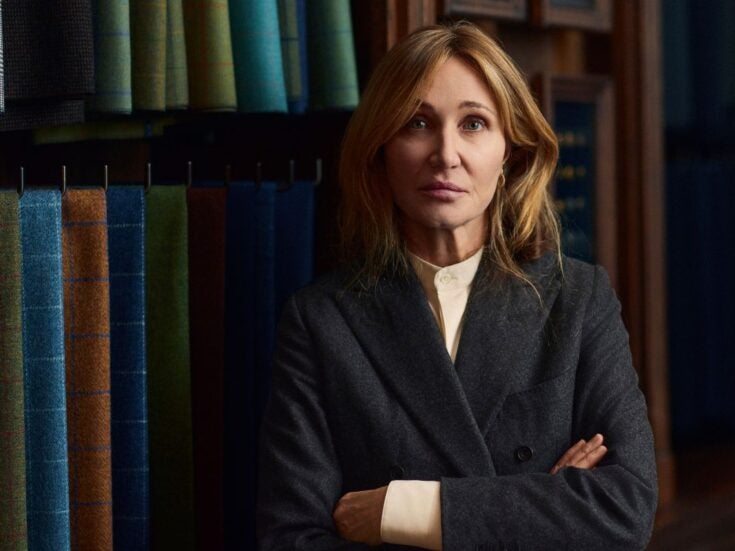Josh Spero on future leaders, ‘Tinder for exercise’, Philip Mould and a multi-million pound divorce flight
Move closer
At 31 and with barely an entrepreneurial bone in his body, Hedgehog was left feeling both exhausted and awed by the 18-to-25-year olds on the Close Brothers Future Leaders scheme, which reached a crescendo with a Dragons’ Den-style pitching event.
As beaming parents and benevolently rivalrous scheme-fellows watched, each of six groups of next-genners presented their idea for a disruptively innovative business or a social enterprise to three entrepreneurs: Tim Hall of good-food retailer Pod; Kate Shand of tutoring agency Enjoy Education; and Simon Norris of Nomensa, a digital experiential agency (no, me neither).
The groups of six kids (I know 25 isn’t a kid, but it is to me) had six hours to devise their idea, research the marketplace, work out marketing and sales tactics, develop SWOT analyses and even prepare financial statements which, while somewhat detached from reality, were impressive in their detail and certainly better than I could do. (The team who wanted to give 20 per cent of their revenue to TfL got the biggest laugh.)
The ultimate winner (of prestige, not investment), was SideKick, an app which uses GPS to locate people who might want to exercise with you. For those unlike Hedgehog who are able to do more than one press-up or lap of the park without calling their cardiologist, this would be genuinely useful. ‘Tinder for exercise’, Kate Shand called it.
Fresh canvas
Philip Mould has given up his Dover Street space, victim of encroaching fashion houses, for the gleam of his new Pall Mall galleries, with double the space for his Old Masters and Modern British pictures. These rooms, with their silvery wood floors and hessian wallpapers in 18th-century hues chosen by Ed Bulmer, stretch across three levels and are, says Philip, ‘the gallery of my dreams’.
Philip, known to many as one half of BBC One’s Fake or Fortune? presenting team, has applied in the new gallery lessons about how to show Old Masters learnt over decades in the trade — ‘how to fuse them with a modernistic approach without being tawdry’. Instead of gratuitous damask hangings in jewel colours, the hessians — not drab but not showy — let the art lift itself. Higher ceilings allow large works to loom.
There is a screen by the reception desk showing videos which shed light on artworks, and paintings before and after restoration. Indeed, propped against a wall when I visited was a portrait by Henri Gascars of Charles II’s mistress Louise de K’rouaille, duchess of Portsmouth, known as Fubbs for her generous proportions. (‘Fubsy’ meant chubby.) A peach streak runs down her sallow breast, showing what a cleaning will do for a work.
Picking up on a buyers’ quirk, Philip has made the narrow storage racks of paintings — normally out of sight — easily available; patrons like the feeling (the illusion?) of discovering works for themselves.
Collectors, academics and the broader market need to relent from their ‘savage’ assault on ‘the 18th-century sensibility’, though, before
Old Masters can rise again.
If anything’s going to persuade them to give those paintings a chance, it will be the setting Philip has contrived for them.
Philip Mould & Company, 18-19 Pall Mall
Capital flight
Amy Radnor of Charles Russell Speechlys writes:
The media loves to report on the multimillion-pound settlements achieved in English courts by (usually) ex-wives; the other side of that coin,
any divorce solicitor will tell you, is how many of those wives never see a penny of their ordered settlements.
Very wealthy individuals without ties to the UK, as well as those who are prepared to give up their jobs and risk prison rather than pay, can pose significant difficulties for enforcement. The court recognises this, and being seen as ‘high risk’ can mean paying significantly more if you do have assets in the UK. The divorce of Essam and Enas Aly is a recent case in point.
The Court of Appeal has upheld an order giving Mrs Enas Aly 100 per cent of their relatively modest assets in the divorce, as Dr Aly had moved to Bahrain in 2012 and essentially ‘washed his hands’ of her and the children.
The court ruled that as Dr Aly was a ‘serial defaulter’ who had paid nothing and was unlikely to comply with any order to pay in the future, Mrs Aly should have the entirety of the assets up front to provide her with security and free her from the need to enforce against a man who, in the words of Lord Justice McFarlane, ‘was beyond the reach of enforcement in this country’.
Prevention is always better than cure, of course, and divorce lawyers acting for the wives of such individuals will often advise accepting a lower amount by agreement, with payment up front, rather than litigating in the hope of achieving an order for a higher amount which may not translate into actual cash.
Cases like this are thankfully unusual — so much so that they end up becoming the centre of media attention. Though enforcement is often difficult, the English courts have many ways to make people pay.
Steel yourself
At the Knightsbridge home of collector Nicolas Cattelain (he has a certificate of ownership for Martin Creed’s The lights going on and off hanging on the stairs), we saw the launch of Going Public, a project where four collectors, including Cattelain, are loaning work to be shown around Sheffield’s galleries and cathedral.
The project, said Kim Streets, CEO of Museums Sheffield, was aimed at showing how ‘private philanthropy can have a role in the public arts sector’, and the presence of not just Cattelain but also Eugenio Re Rebaudengo, whose family are lending, showed the generous, innovative side of art-giving.
This was all, of course, framed as ‘starting the conversation’ about philanthropy, art, the public and private spheres, but there is a certain nervousness underlying the project, and also relief at having pulled it off. It seems like a good example of first-mover advantage: by engaging with the friendlier foundations, Sheffield gets great art and is in a prime position to deepen these relationships, beating other cities to it. Other regions, who can learn from Sheffield at a conference on this subject later in the year, need to move fast.
Nicolas Cattelain put it most starkly as we sat in his drawing room amid a Dan Flavin light sculpture and 18th-century French furniture: galleries needed to beware collectors taking advantage of them. ‘The elephant in the room,’ he said, ‘is how you mix public and private interests.’ We have all seen collectors promoting this artist over that, he continued, in their own interests: a loan to a prestigious collection increases the value.
That’s why an early approach is important: ‘Being in the driving seat is key there, otherwise it’s going to happen to you anyway — in the wrong way, with the wrong people.’ Public collections, he implied, will be lumbered with works of minor artists from rapacious collectors — and will have to be grateful for them too.
‘Going Public: International Art Collectors in Sheffield’ runs from 16 September to 12 December
What goes up…
Some rare bad news for the wealthy has arrived in the form of the Capgemini/RBC World Wealth Report 2015: the wealthy are getting wealthier more slowly, and some are even getting poorer.The number of HNWs (those with investable assets of $1 million or over) has grown globally by 6.7 per cent to 14.6 million, and their net worth by 7.2 per cent to $56.4 trillion. These are the second-slowest rates of growth in the past five years. Asia-Pacific now has 4.69 million HNWs, compared with North America’s 4.68 million, again taking the lead in numbers, though America’s are together worth more ($16.2 trillion v $15.8 trillion).
Crashing commodity prices and corporate scandals in Latin America have caused the number of wealthy there to fall by 2.1 per cent (to half a million) and their net worth by 0.5 per cent. Europe, in the eurozone doldrums and with equity markets declining, had the slowest growth in numbers (up 4 per cent to 4 million) and worth (up 4.6 per cent to $13 trillion).UHNWs (those with investable assets of $30 million or over) have fared much better, outpacing their rate of growth in the previous five years to rise 8.6 per cent in numbers and 7.4 per cent in worth. There are now 139,000 UHNWs in the world, the report estimates.
If growth continues at the average rate of the past five years, the report says total HNW wealth will reach $70 trillion in 2017 — which may be somewhat cheering news for any depressed billionaires.
Six!
As if Oxfordshire were not Arcadian enough, Sir Paul Getty had to go and create Wormsley, with its library stuffed with the First Folio and Anne Boleyn’s Psalter and its cricket pitch complete with thatched pavilion at the foot of the Chiltern Hills. (That’s not even to mention Garsington Opera’s new glass pavilion in the grounds.) While Hedgehog remembers it not from cricket but a particularly enjoyable 21st-birthday party (fireworks to rival Bastille Day’s), it has given pleasure to many others with bat and ball. And now cricketeers (that’s the correct term, right?) can gain access with corporate or personal membership to the new Wormsley Club.
Tim Munton, former Warwickshire and England player and one of Wisden’s Cricketers of the Year in 1995, played at Wormsley back in 1993 and has since joined the home side. He told Hedgehog that founder membership is ’15,000 and allows you to wear the John Paul Getty XI tie and blazer, as well as attend one of this summer’s four cricket garden parties. There will be invitations to private dinners and access to Wormsley’s pheasant and partridge shoot too. Corporate members can even put up their own six-a-side teams.
If that doesn’t get you into your cricketing whites, we’re not sure what can.
julie@wormsleyestate.com
’
FIVE MINUTES WITH NOBU MATSUHISA, FOUNDER OF THE GLOBAL JAPANESE RESTAURANT BRAND
Favourite cuisine (not Japanese)?
I would say Chinese: I like the spice.
Nobu or night in?
Night in: these are rare so I enjoy them when I can.
Sushi or sashimi?
Both, I couldn’t choose a favourite.
Most influential cookbook?
I don’t use cookbooks so I couldn’t say!
London hidden gem?
El Pirata de Tapas, round the corner from Nobu. Really good Spanish tapas.
Japan’s best export is…
Fish: the sushi-grade quality is unrivalled. Otherwise I’d say the Wagyu grade beef — it really is fantastic.
Hero?
I guess I would say my mother.
Guilty pleasure?
Tequila! I do love a good quality tequila on the rocks.






